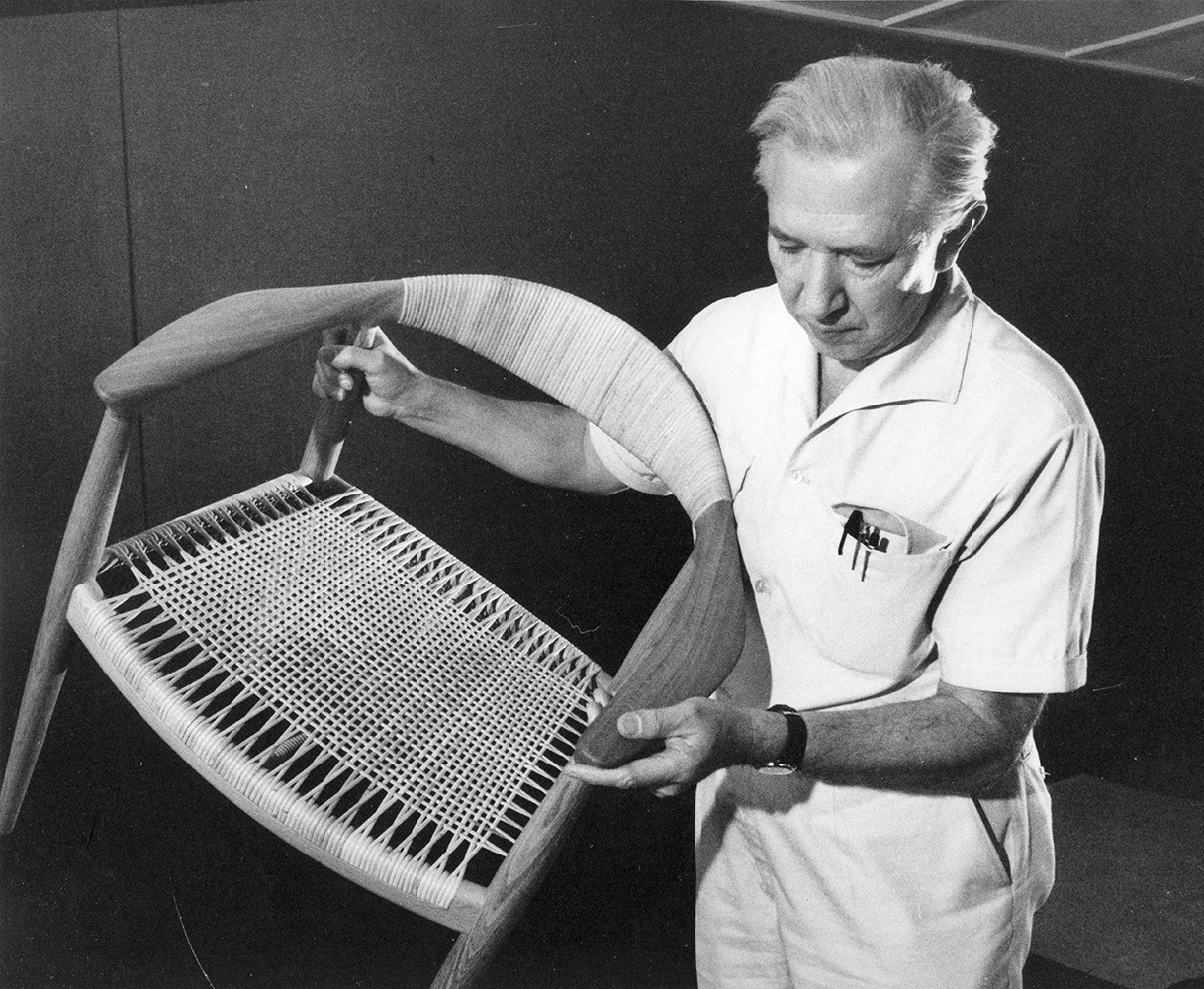
Wegner was often referred to as the master of chairs and he considered the chair to be the greatest challenge within the field of design. As he explained, “The chair is the object closest to humans.”
Wegner was a purist. He refined his ideas about crafts and ergonomics with an almost scientific methodology and worked intensely in a relentless search for the perfect chair, “I have the feeling it eludes me the more I work on it”, he once said.
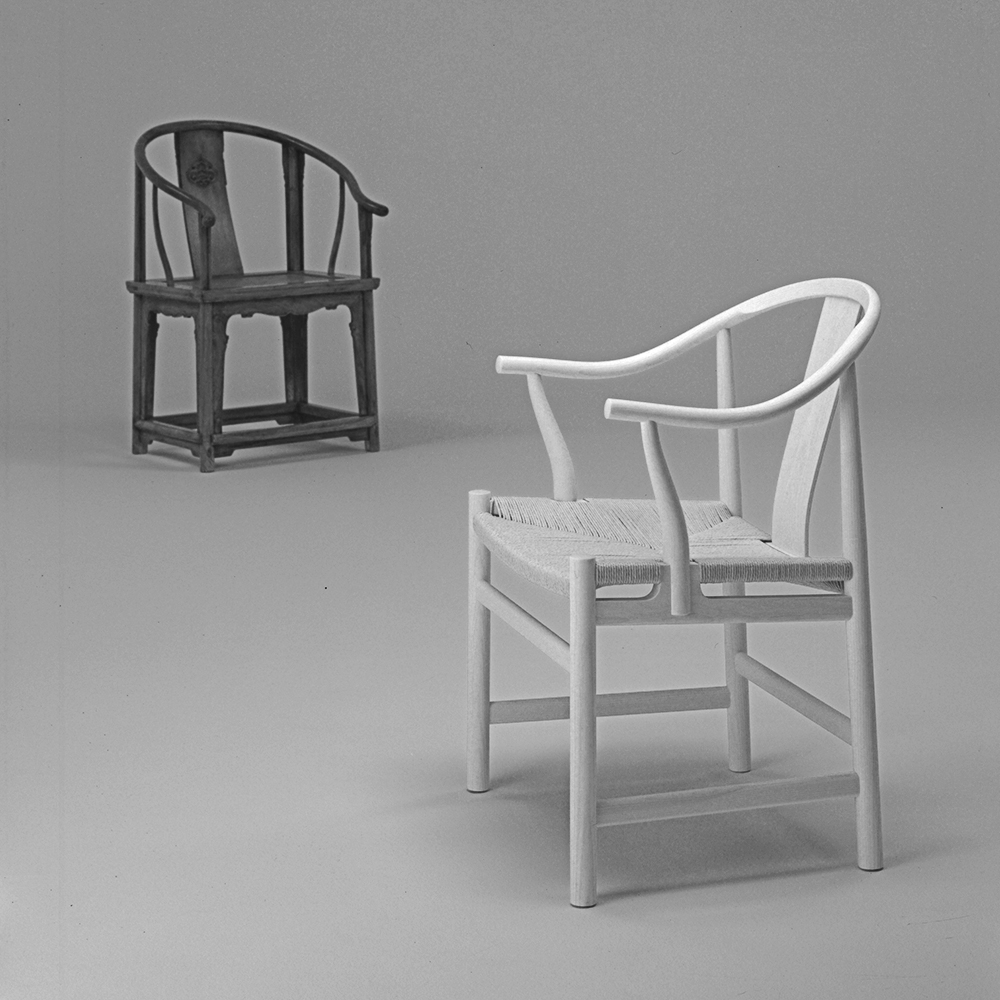
The foundation of Wegner’s principal work was his detailed studies of Ming Dynasty Chinese chairs. These led directly to the creation of the Round Chair and consequently marked the International breakthrough for Wegner personally as well as for the export phenomenon of Danish design.
In creating the Round Chair Wegner simplified its construction by placing the emphasis and focus of work onto the critical points of contact. The combined back and armrest.
The first step was to extend the front legs to meet with the armrests in order to make a more simple construction. But the major step was the acknowledgment that the center upright splat in the back had to be removed, as it counteracted optimal ergonomics.
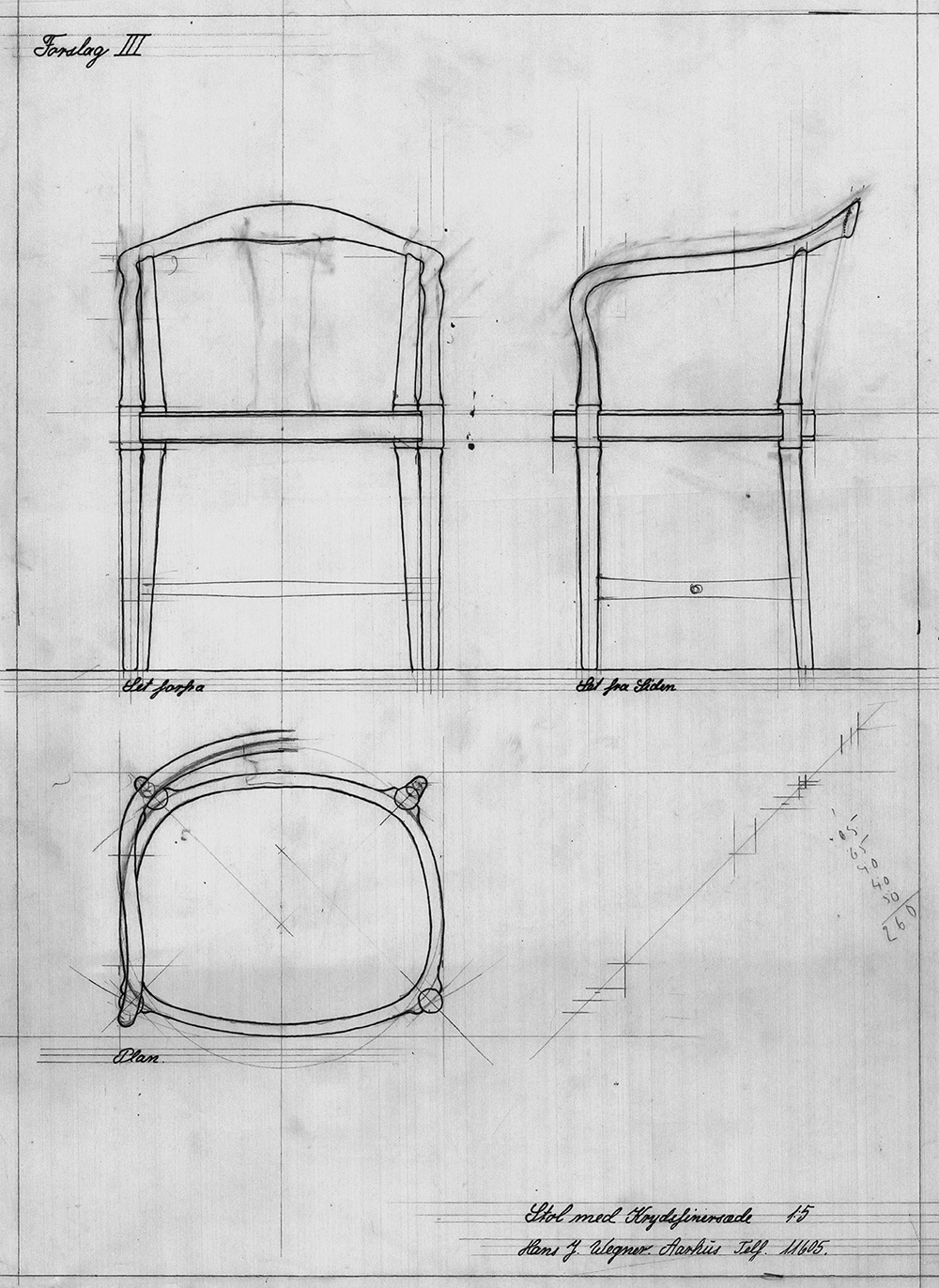
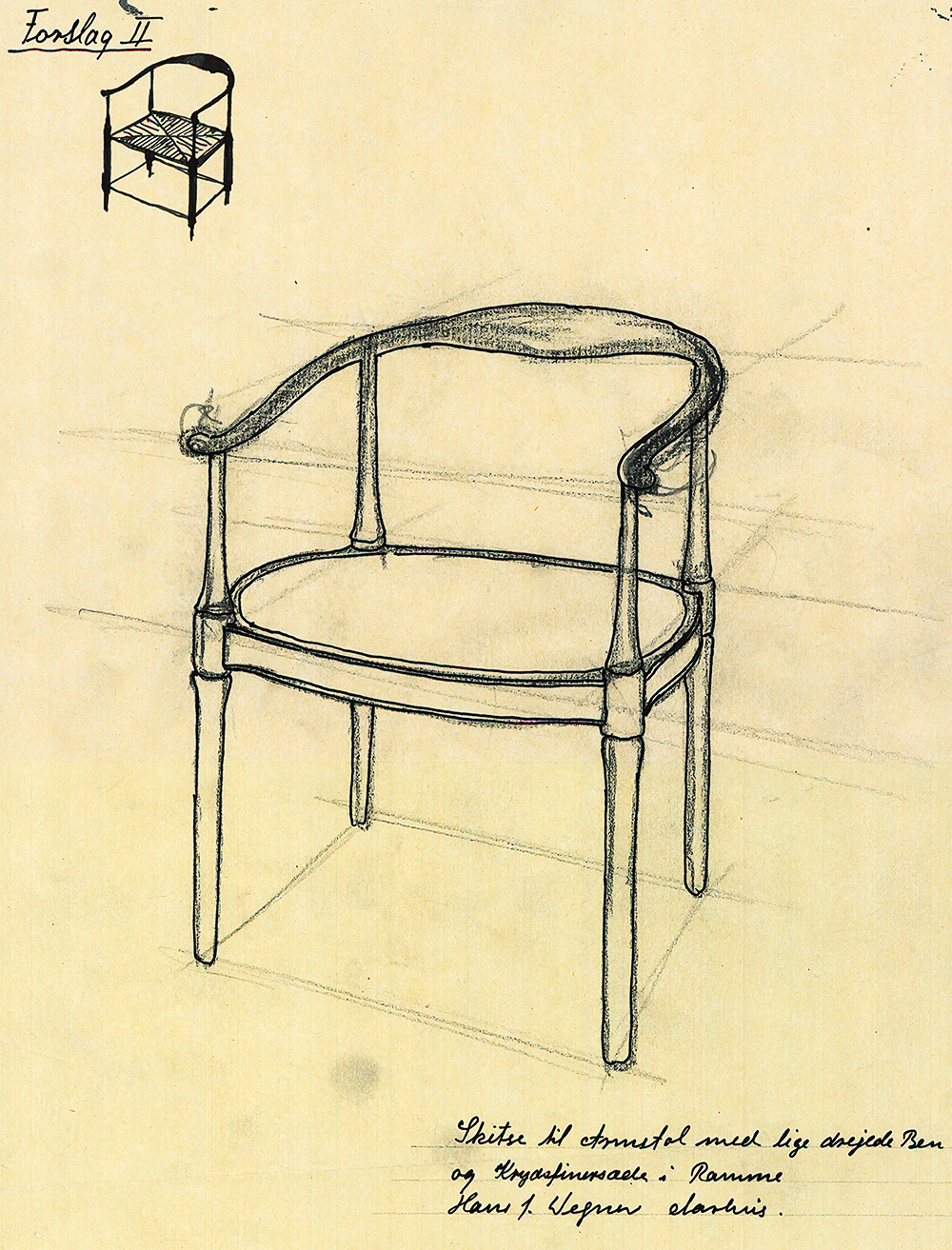
The Chinese inspired design slowly evolves. In this sketch Wegner has simplified the construction to four straight and similar legs, and he has added more material to the back to obtain comfort as the upright center splat has been discarded.
With a strong desire to create something that could only be made by the best Danish craftsmen, Wegner applies an elaborate curvature to the critical points of contact. The combined back and armrest.
The legs and the seat are smoothly integrated. All unnecessary details have been removed, and each piece is carefully shaped down to the essentials of their purpose with the logic of a woodworker.
At this stage Wegner has reached a satisfactory basic construction, but the top view of the armrest reveals curves that still relate to the Chinese origin.
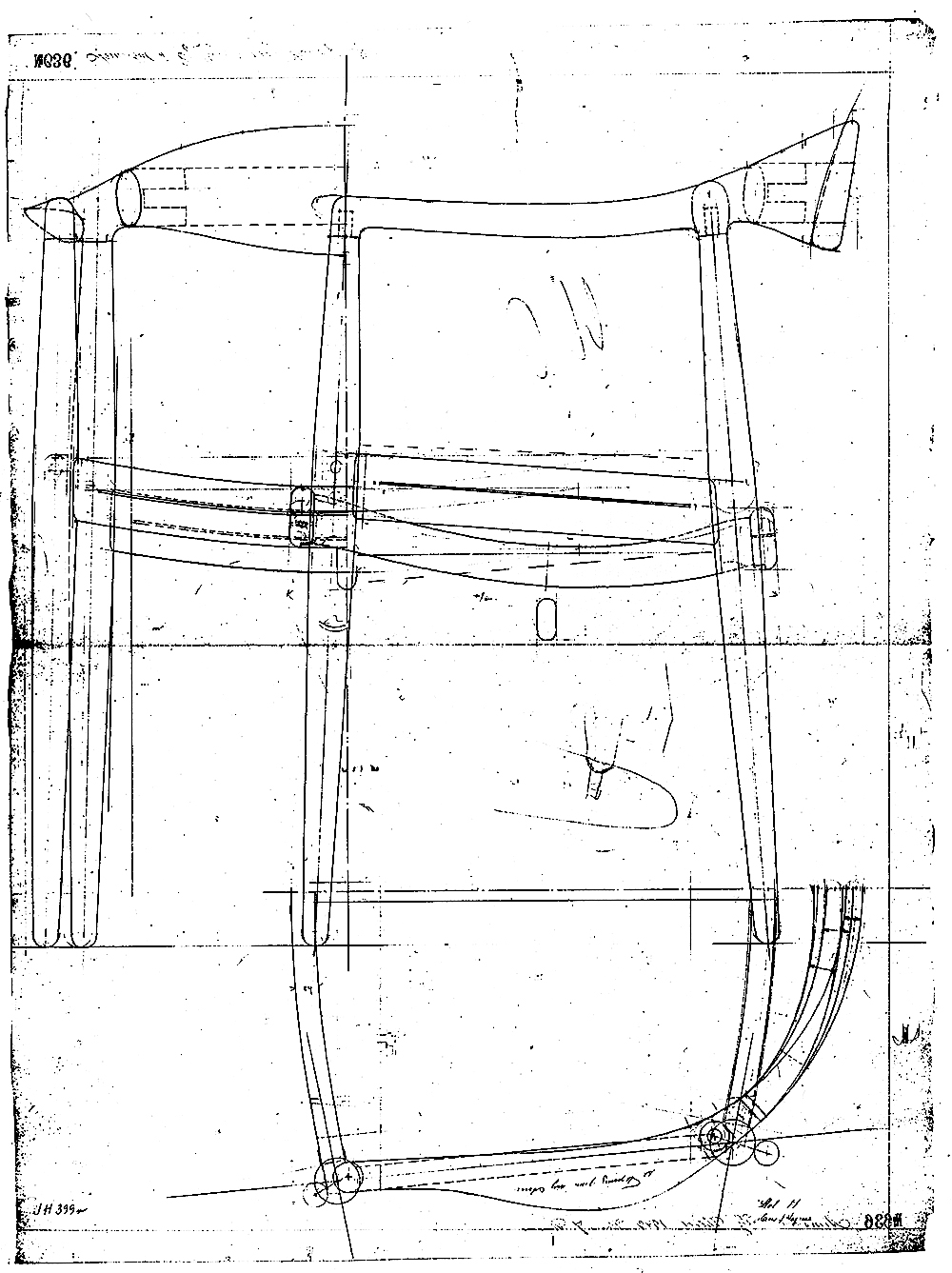
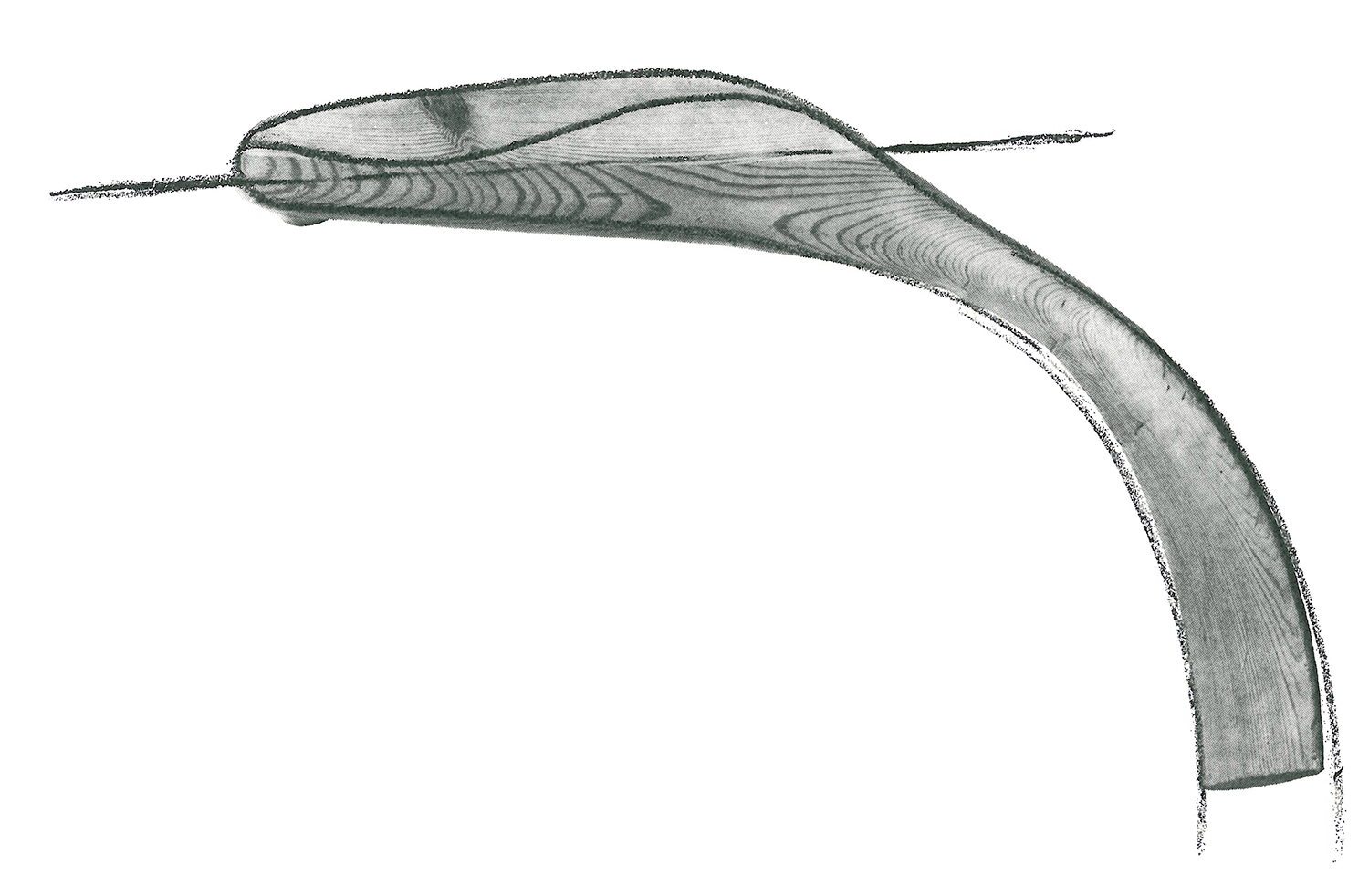
In a design process such as this Wegner always worked on full scale test models alongside the sketches and the technical drawings. He had to feel and sculpt the shape with his own hands in order to grow confidence in the design.
In a decisive moment Wegner cuts off the outer part of the armrest and glues on a new piece of wood in which he carves the characteristic propeller shaped armrest. Now the design is relieved from any resemblance. Wegner has finally found the core of his own language of shape and created a truly original and practical design.
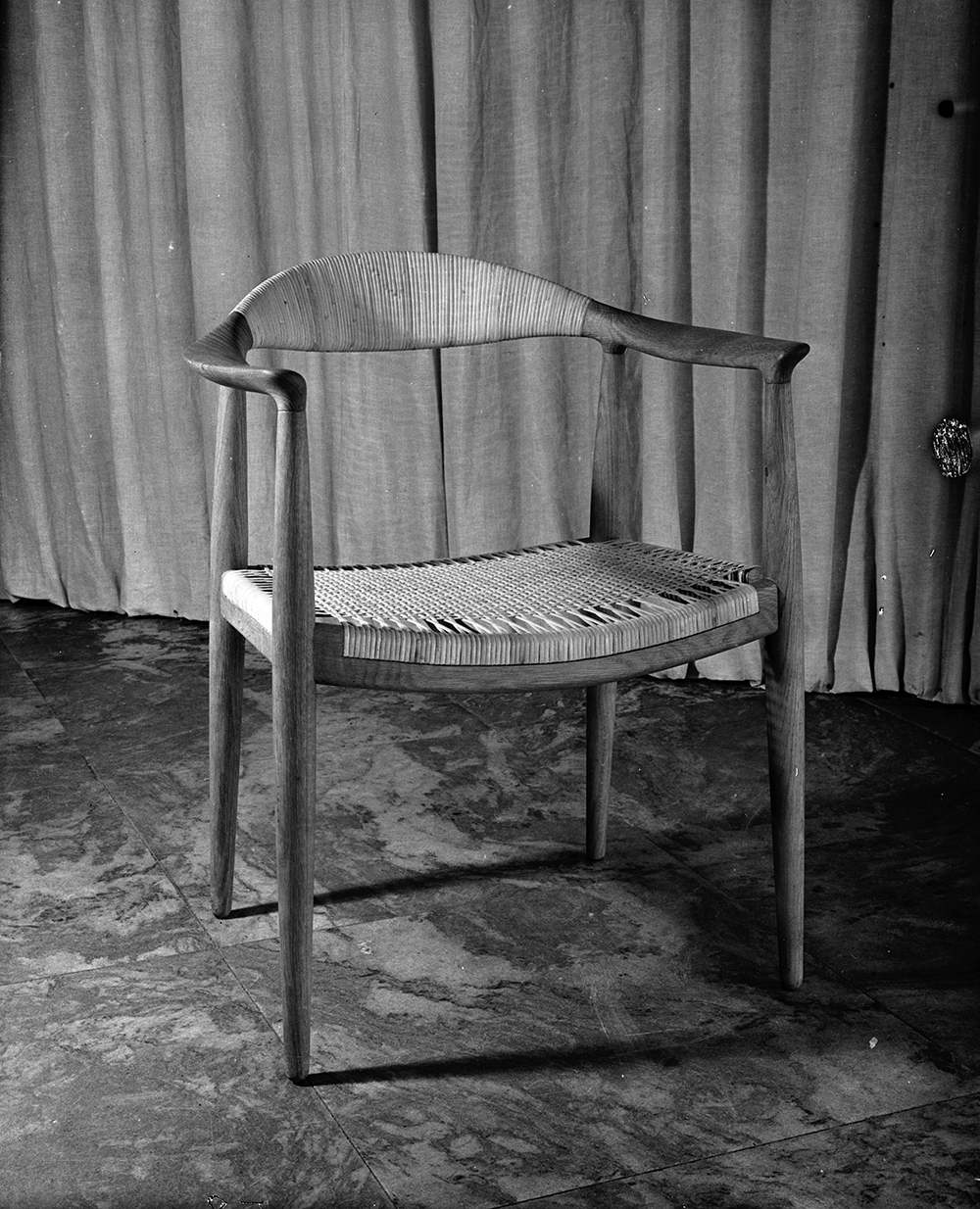
“In this oak desk chair Mr. Wegner uses a simple construction and devotes himself to perfecting the shape and scale of the parts.
The top rail, a complicated collection of twisted curves and joints, was wrested into quiet obedience.
The sturdy legs are tapered just enough to seem muscular rather than overfed and the seat dips slightly to look willing but not seductive.”
Interiors Magazine, 1950
The Round Chair became one of the most desired designs on the American market and the export of Danish furniture quickly picked up. Within the American furniture business, the Round Chair was regarded as an archetype of a modern chair and it became known simply as “The Chair”.
In 1960, when John F. Kennedy faced Richard Nixon in the first presidential election debate to be televised, they sat in “The Chair”. The debate was historic and proved pivotal in favour of Kennedy. The iconic image of him sitting in “The Chair” marks the event considered one of the great moments in American political history.
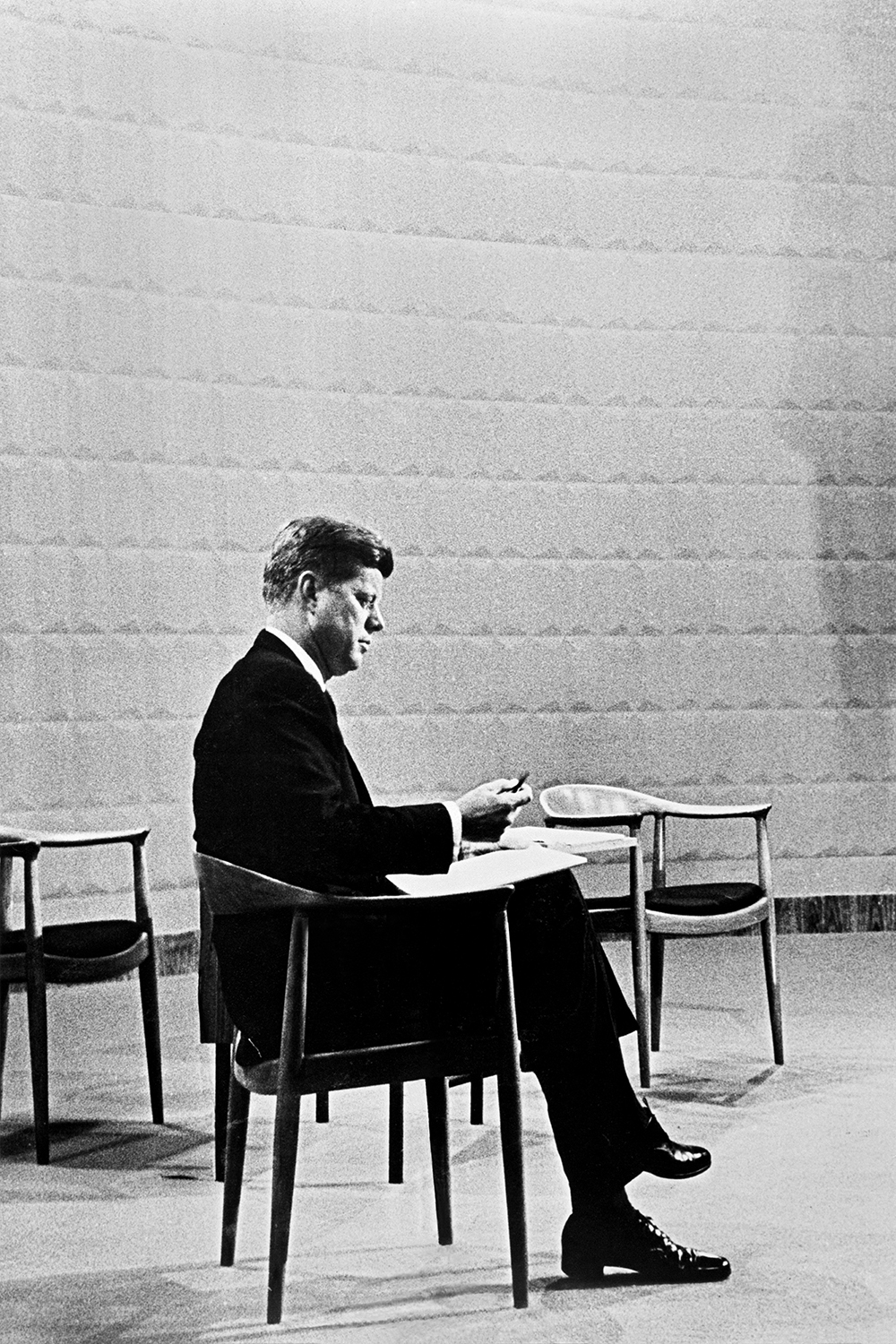
Hans J. Wegner
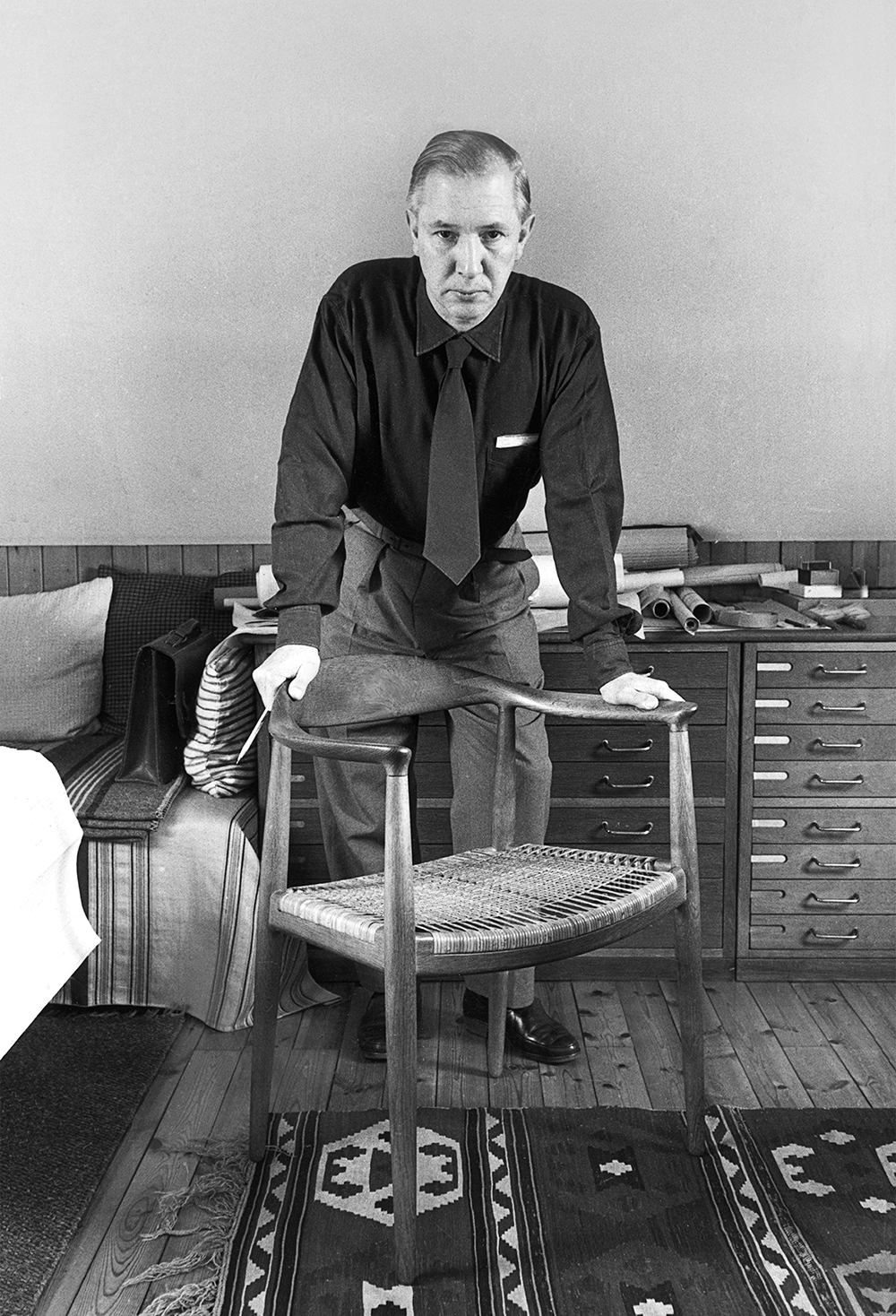 photo: Mogens Ladegaard
photo: Mogens Ladegaard